Millennium Park is home to a dozen different spaces featuring the park's rich artistic and architectural history, cultivated by Chicago's proud community.
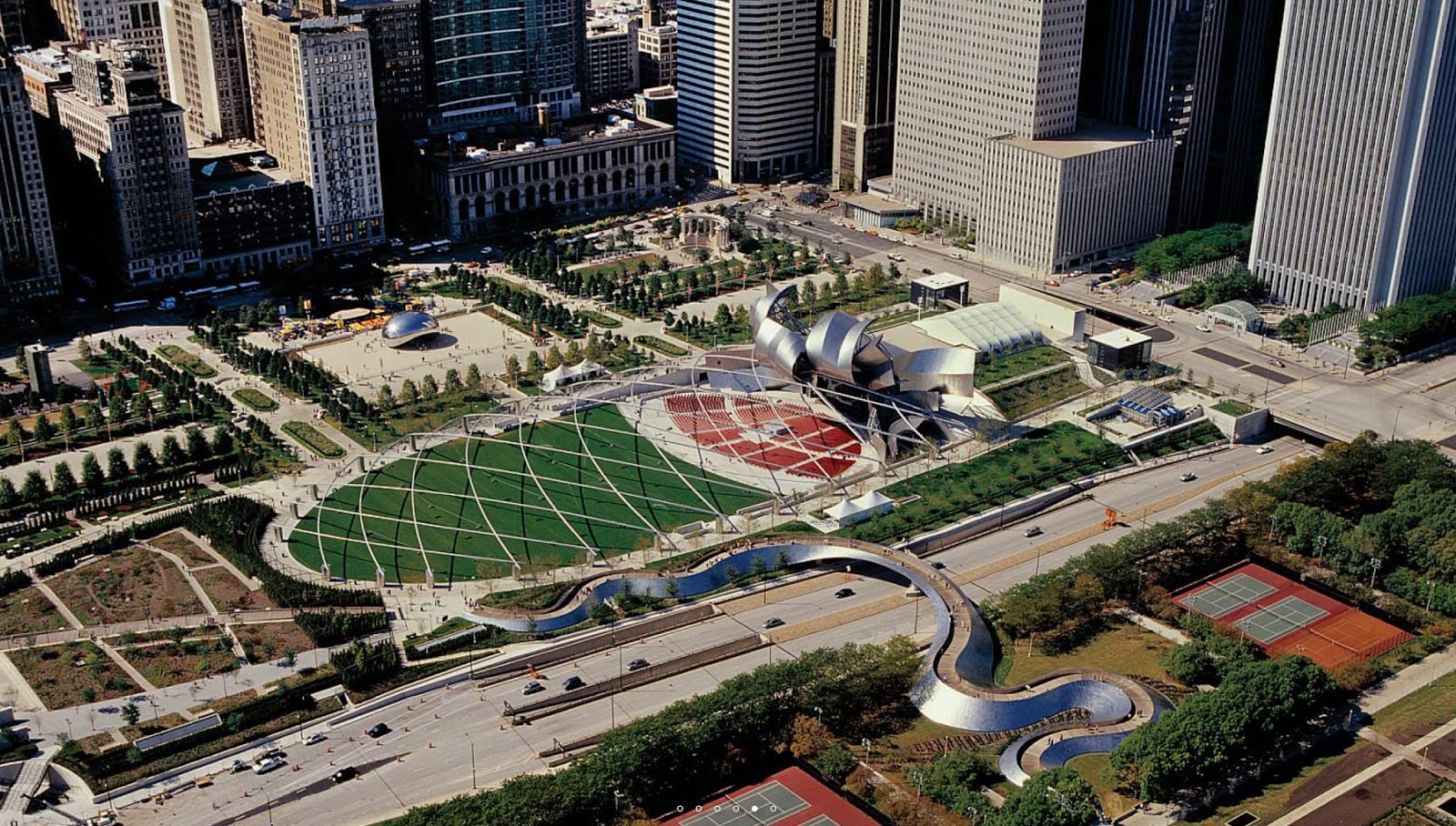
home › learn
ART & ARCHITECTURE
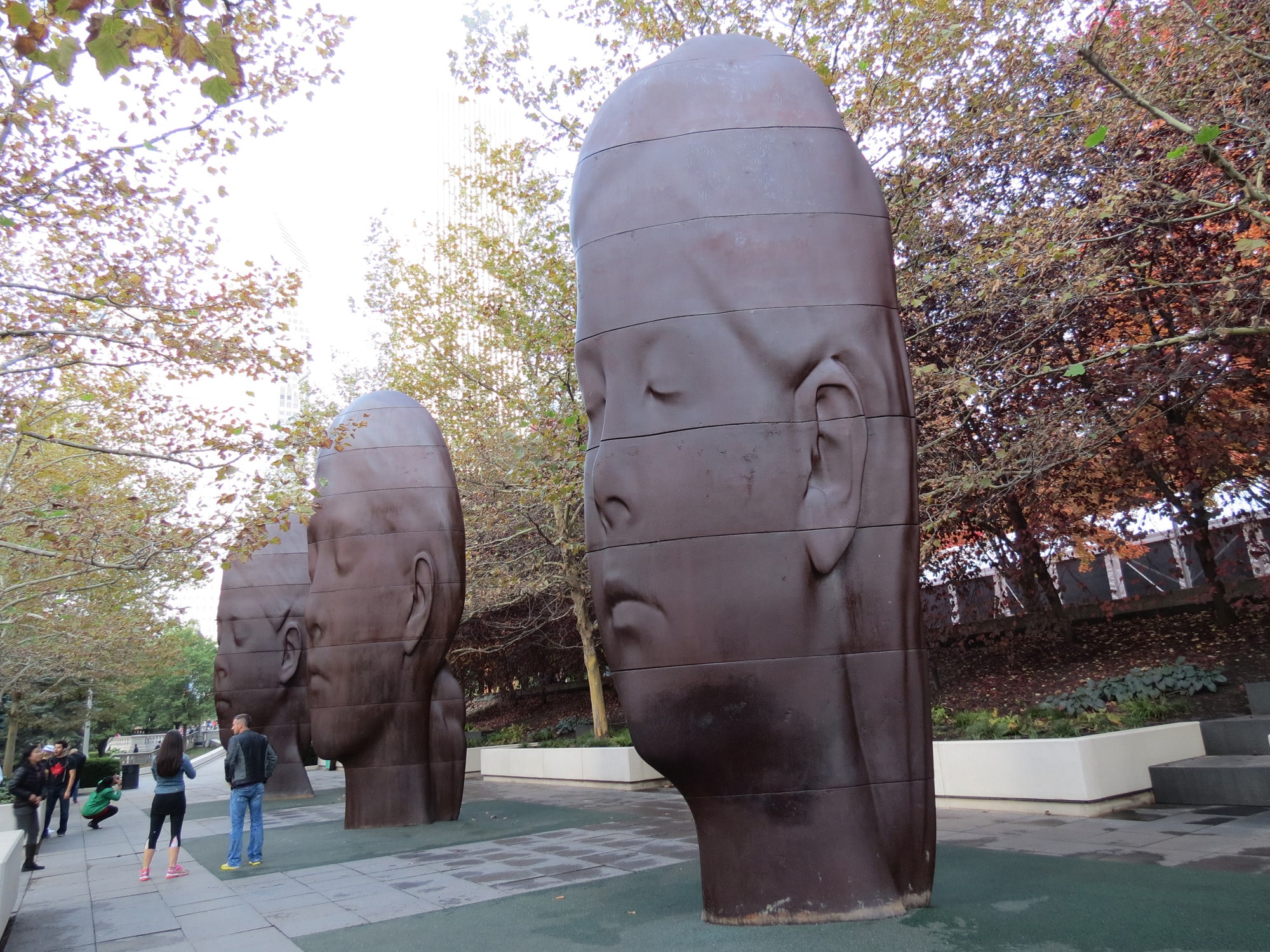
Boeing Galleries
The formal Boeing Galleries in Millennium Park are a home for modern and contemporary art, where visitors can directly experience the work and ideas of living artists. Located on both the north and south sides of the Park, the galleries provide a high quality historical, social and cultural context of the art and architecture of our time. The Boeing Galleries were made possible through a gift from The Boeing Company.

BP Bridge
Clad in brushed stainless steel panels,Frank Gehry’s BP Bridge complements the Jay Pritzker Pavilion in function as well as design by creating an acoustic barrier from the traffic noise below. Connecting Millennium Park to Daley Bicentennial Plaza, east of the park, this 925-foot-long winding bridge, Gehry's first, provides incomparable views of the Chicago skyline, Grant Park and Lake Michigan.
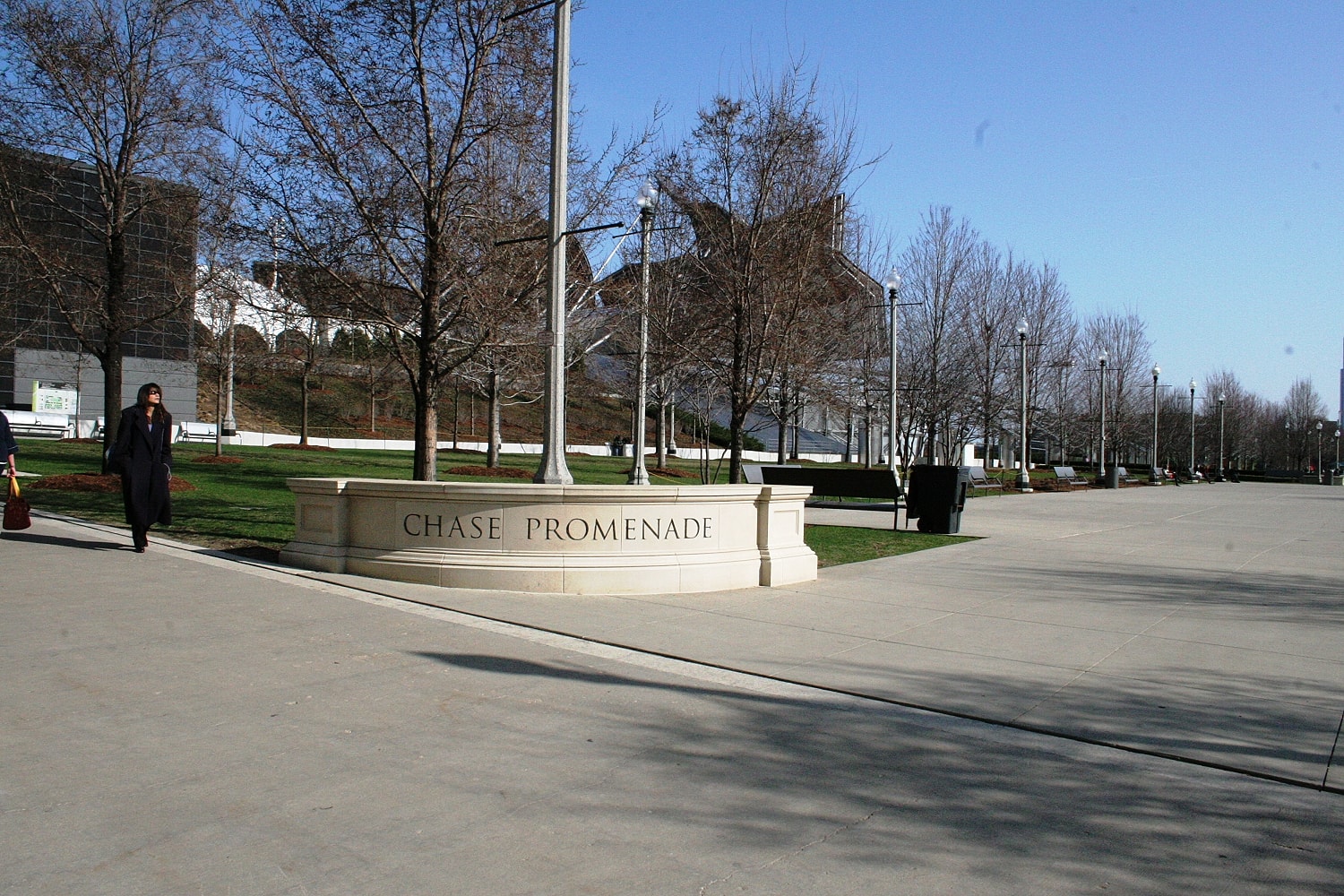
Chase Promenade
A three-block-long walkway lined by nearly 200 trees, the Chase Promenade spans the center ofMillennium Park from Monroe to Randolph streets. Chicagoans and visitors are invited to enjoy exhibitions, festivals and other family events on these eight acres of the Park. The Chase Promenade was made possible through a gift from the Bank One Foundation.
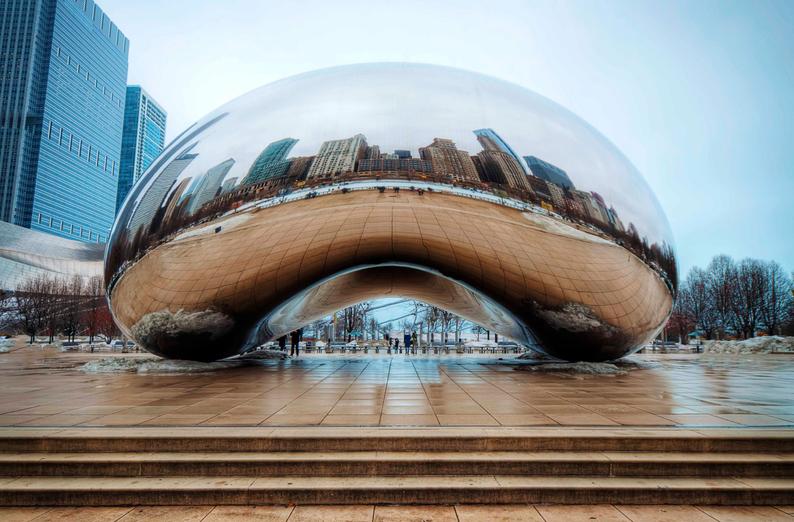
Cloud Gate
Cloud Gate is British artist Anish Kapoor's first public outdoor work installed in the United States. The 110–ton elliptical sculpture is forged of a seamless series of highly polished stainless steel plates, which reflect Chicago’s famous skyline and the clouds above. A 12–foot-high arch provides a "gate" to the concave chamber beneath the sculpture, inviting visitors to touch its mirror-like surface and see their image reflected back from a variety of perspectives.Inspired by liquid mercury, the sculpture is among the largest of its kind in the world, measuring 66–feet long by 33–feet high. Cloud Gate sits upon the AT&T Plaza, which was made possible by a gift from AT&T.
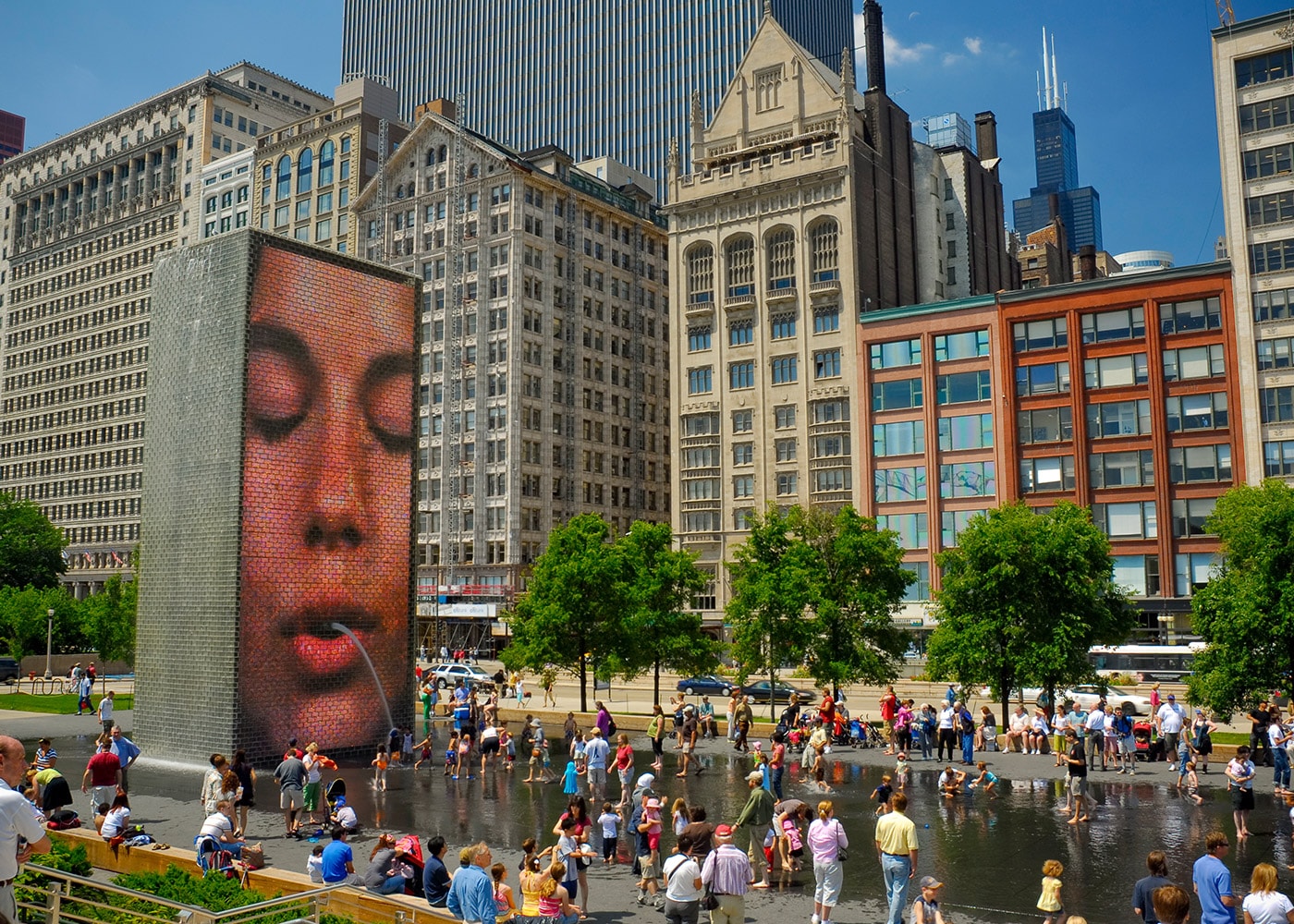
Crown Fountain
Designed by Spanish artist Jaume Plensa, the Crown Fountain in Millennium Park is a major addition to the city's world-renowned public art collection. The fountain consists of two 50–foot glass block towers at each end of a shallow reflecting pool. The towers project video images from a broad social spectrum of Chicago citizens, a reference to the traditional use of gargoyles in fountains, where faces of mythological beings were sculpted with open mouths to allow water, a symbol of life, to flow out.Plensa adapted this practice by having faces of Chicago citizens projected on LED screens and having water flow through an outlet in the screen to give the illusion of water spouting from their mouths. The collection of faces, Plensa's tribute to Chicagoans, was taken from a cross-section of 1,000 residents. The fountain’s water features operate during the year between mid-spring and mid-fall, while the images remain on view year-round.
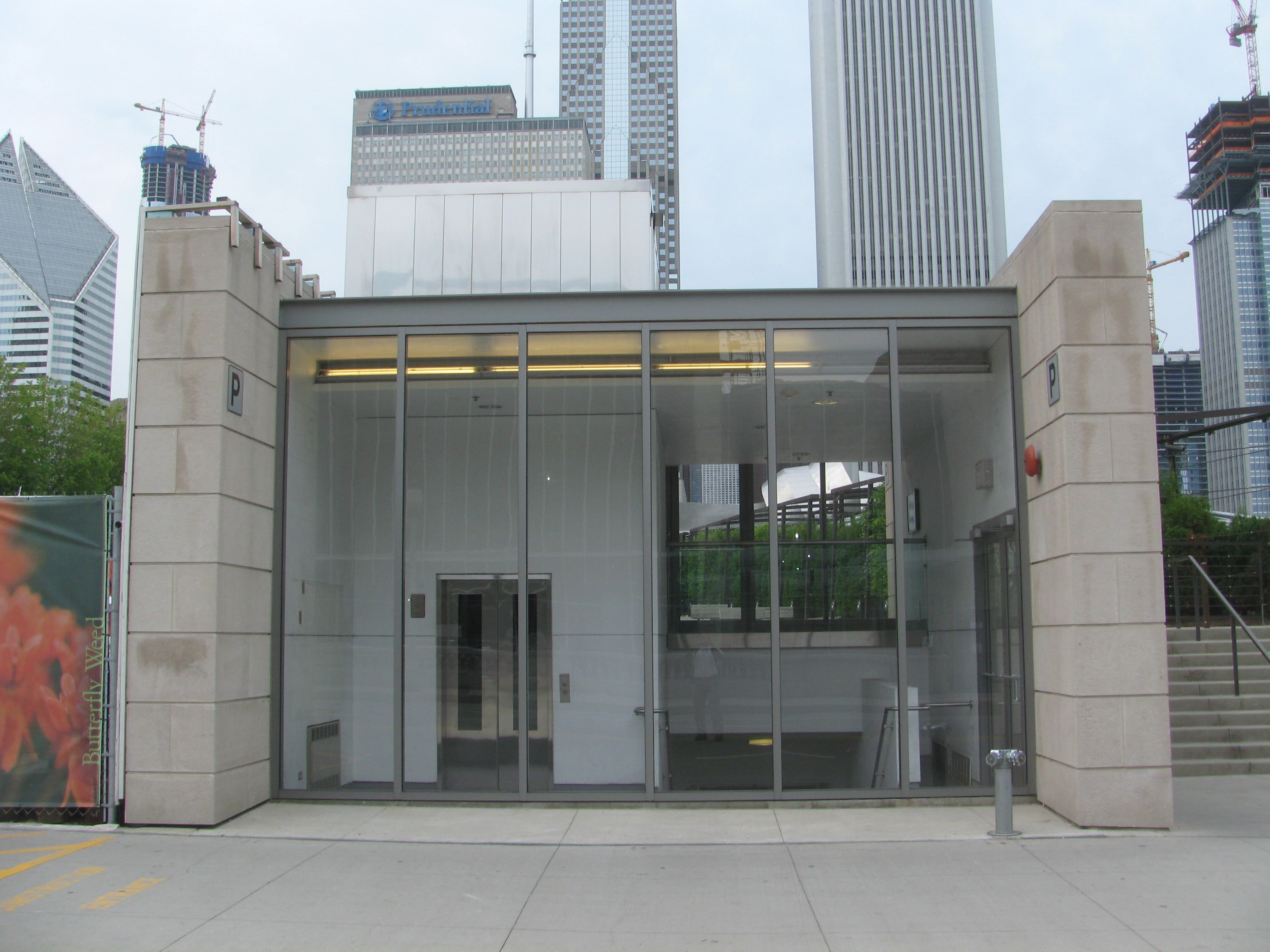
Exelon Pavilions
The four Exelon Pavilions, which use state-of-the art technology to convert solar energy into electricity, are an integral part of Chicago’s efforts to become the most environmentally–friendly city in North America. Together, the Pavilions provide enough electricity annually to power 14 star–rated energy–efficient houses in Chicago. The northwest and northeast pavilions are minimalist black cubes designed to complement the neighboring Harris Theater. The northwest pavilion houses the Millennium Park Welcome Center, along with an Exelon energy display area. The northeast pavilion provides access to the parking garage. The two Exelon Pavilions on the Park's south end also provide access to the Millennium Park Garage, and were designed by architect Renzo Piano.
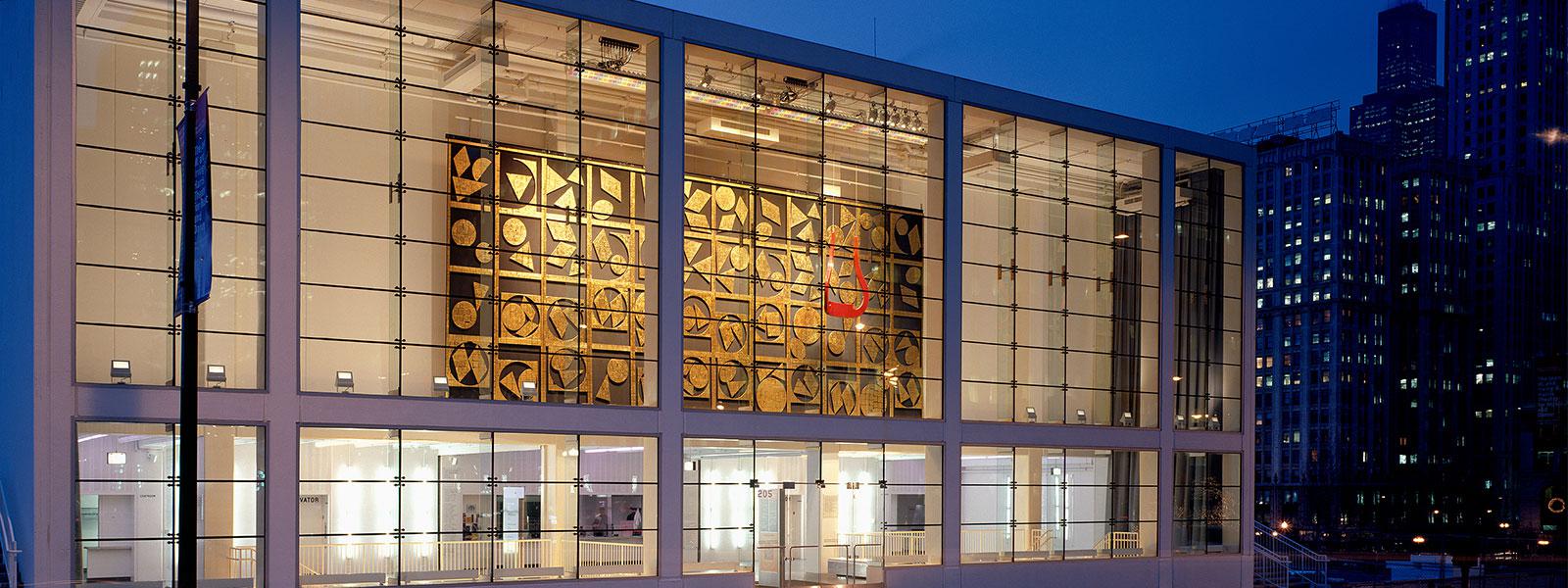
Harris Theatre
From September to May, the non–profit Harris Theater partners with Chicago’s performing arts and cultural institutions, bringing music and dance to the public. The theater’s mission allows the performing arts organizations using the theater to attract broader, larger, and more diverse audiences, encouraging artistic synergy between groups, and increasing opportunities to offer educational programs. The theater serves as a national model of collaboration between the philanthropic community and the arts organizations. It is proud to be the home of Chicago’s most exciting music and dance companies, including Chicago Opera Theater, Music of the Baroque and Hubbard Street Dance Chicago. It also hosts internationally–renowned companies and artists, including San Francisco Ballet, Daniel Barenboim and his West-Eastern Divan Orchestra, New York City Ballet, Laurie Anderson, and eighth blackbird. The theater is located at 205 E. Randolph Street, next to the Millennium Park Welcome Center.
Visit Harris Theatre's Site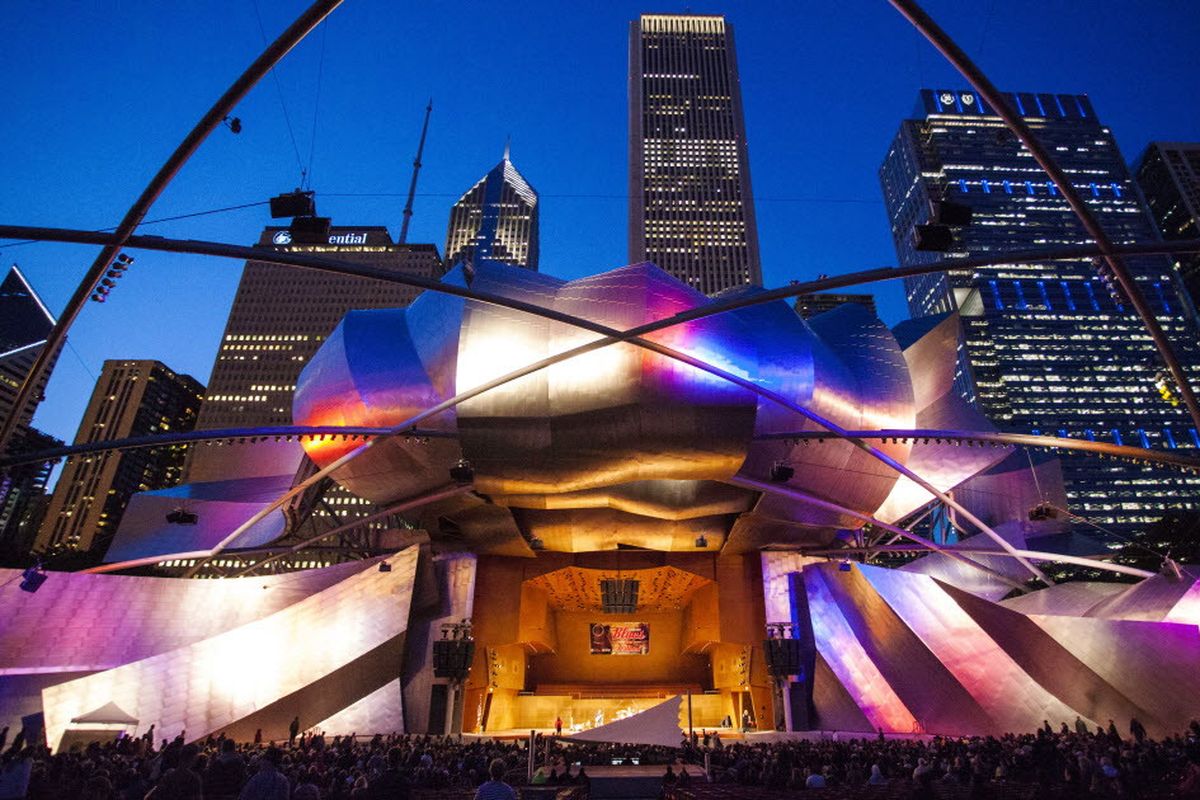
Jay Pritzker Pavilion
Frank Gehry, winner of the National Medal of Art and the designer of theJay Pritzker Pavilion and BP Bridge, applied his signature style to Millennium Park’s revolutionary outdoor concert venue. The Pavilion stands 120–feet high, with a billowing headdress of brushed stainless steel ribbons that frame the stage opening and connect to an overhead trellis of crisscrossing steel pipes. The trellis supports the sound system, which spans the 4,000 fixed seats and the Great Lawn, which accommodates an additional 7,000 people. This state-of-the-art sound system, the first of its kind in the country, was designed to mimic the acoustics of an indoor concert hall by distributing enhanced sound equally over both the fixed seats and the lawn. The Jay Pritzker Pavilion is home to the Grant Park Music Festival and other free concerts and events.
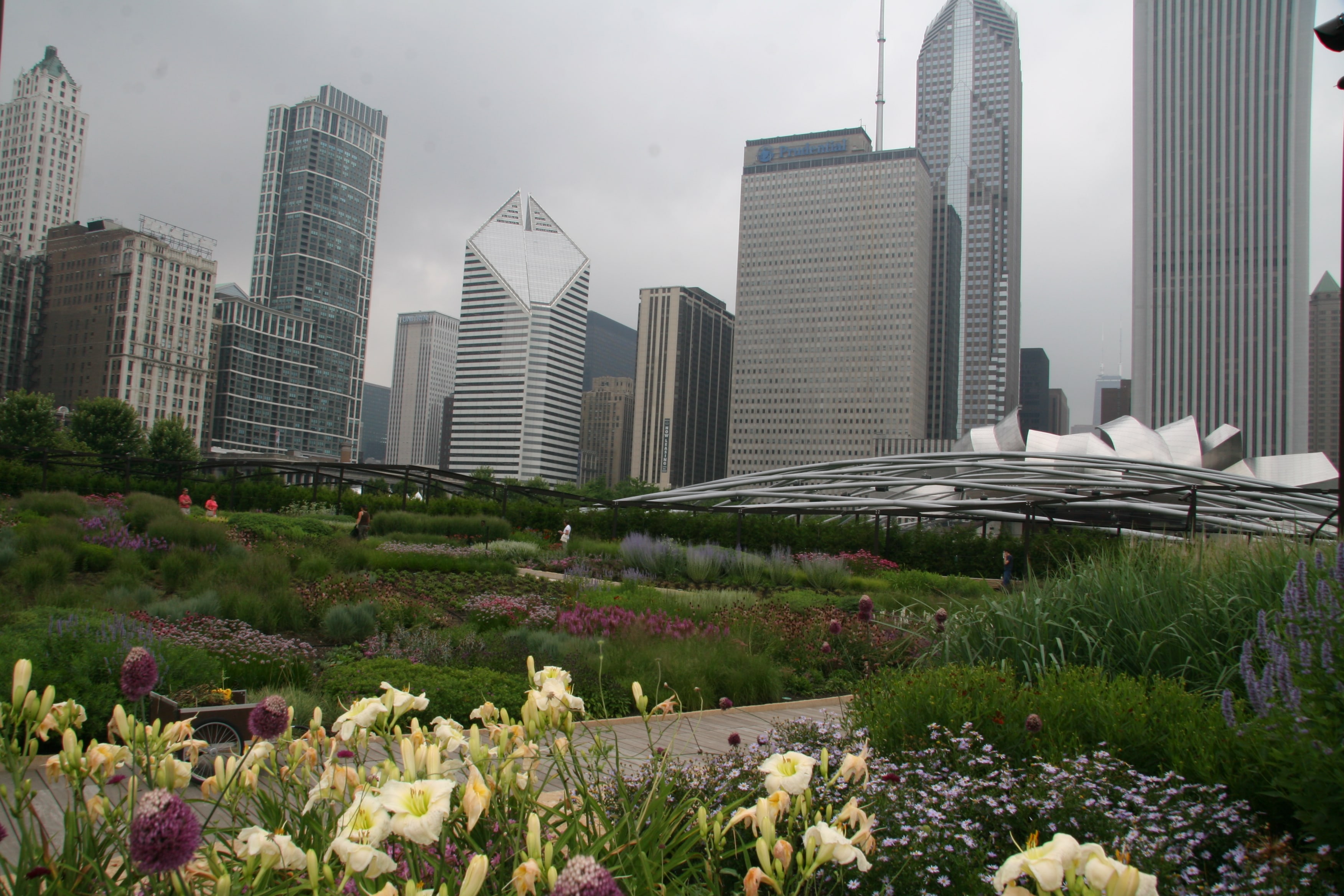
Lurie Gardens
Designed by Gustafson Guthrie Nichol Ltd, Piet Oudolf and Robert Israel, this five acregardenpays homage to the City's motto, "Urbs in Horto" (City in a Garden), which refers to Chicago's transformation from its flat and marshy origins to a bold and powerful city. Highlights of the garden include the dramatically lit, 15–foot-high “shoulder” hedge. This physical representation of Carl Sandburg’s famous description of the “City of Big Shoulders” encloses the garden on two sides and protects the delicate perennial garden. A graceful hardwood footbridge over shallow water divides the garden diagonally between “light” and “dark” plates.
Find Events and Learn More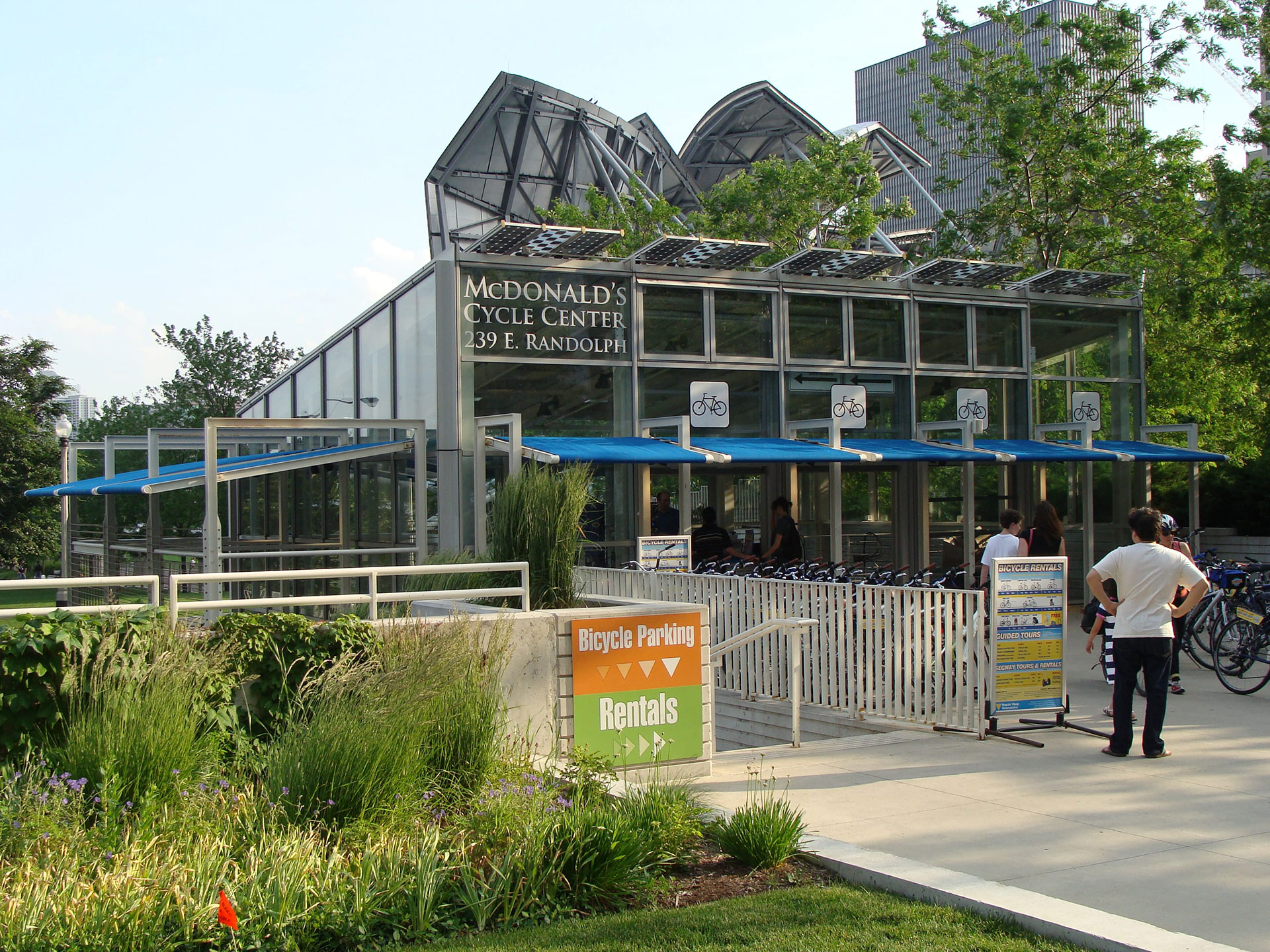
McDonald's Cycle Center
The McDonald's Cycle Center in Millennium Park has something for everyone: bicycle rentals, bike tours and Segway Tours, plus lockers, showers, bike repair, and other amenities designed to encourage biking to the Park and other downtown locations.
More About the Cycle Center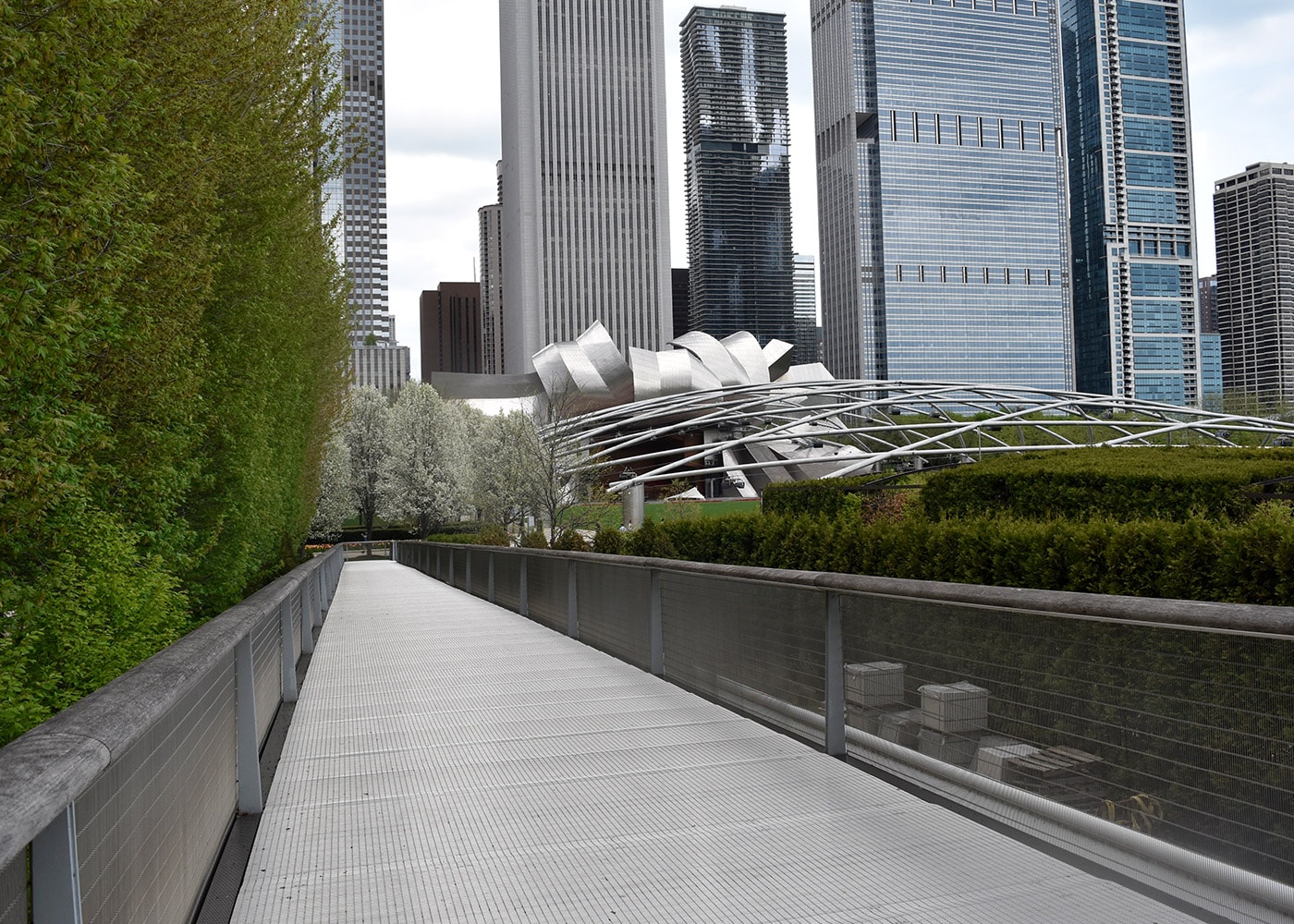
Nichols Bridgeway
The Nichols Bridgeway, the newest addition to Millennium Park is the 625–foot pedestrian bridge that links the Park to The Art Institute of Chicago’s Modern Wing. Immediately accessible from theGreat Lawn at the Jay Pritzker Pavilion, the bridge rises over the Lurie Garden and crosses Monroe Street. It gently arches to a height of 60 feet, offering breathtaking views of the Park, the city skyline, and Lake Michigan, as it approaches the Modern Wing’s third–floor entrance. The Nichols Bridgeway is designed by Renzo Piano, architect of the Modern Wing. It opened in 2009.

Wrigley Square
Located on the corner of Michigan Avenue and Randolph Street, the tree-lined area of Wrigley Square in Millennium Park is an inviting open space for visitors to relax on the lawn or stroll paths. The square is anchored by the Millennium Monument (Peristyle), a nearly full-sized replica of the original peristyle that stood in the same location between 1917 and 1953. With its graceful semi–circular row of Doric-style columns that rise nearly 40 feet, the Millennium Monument ties the past to the present and supports the designation of Michigan Avenue as a landmark district. Etched in stone on the base of the Millennium Monument in Wrigley Square are the names of the founders of Millennium Park. These individuals, corporations and foundations provided generous monetary contribution for the creation and conservation of Millennium Park. The square and peristyle have been made possible by a gift from the Wm. Wrigley Jr. Foundation.
-f7da66d525feaf948445c1b21988bb35.png)